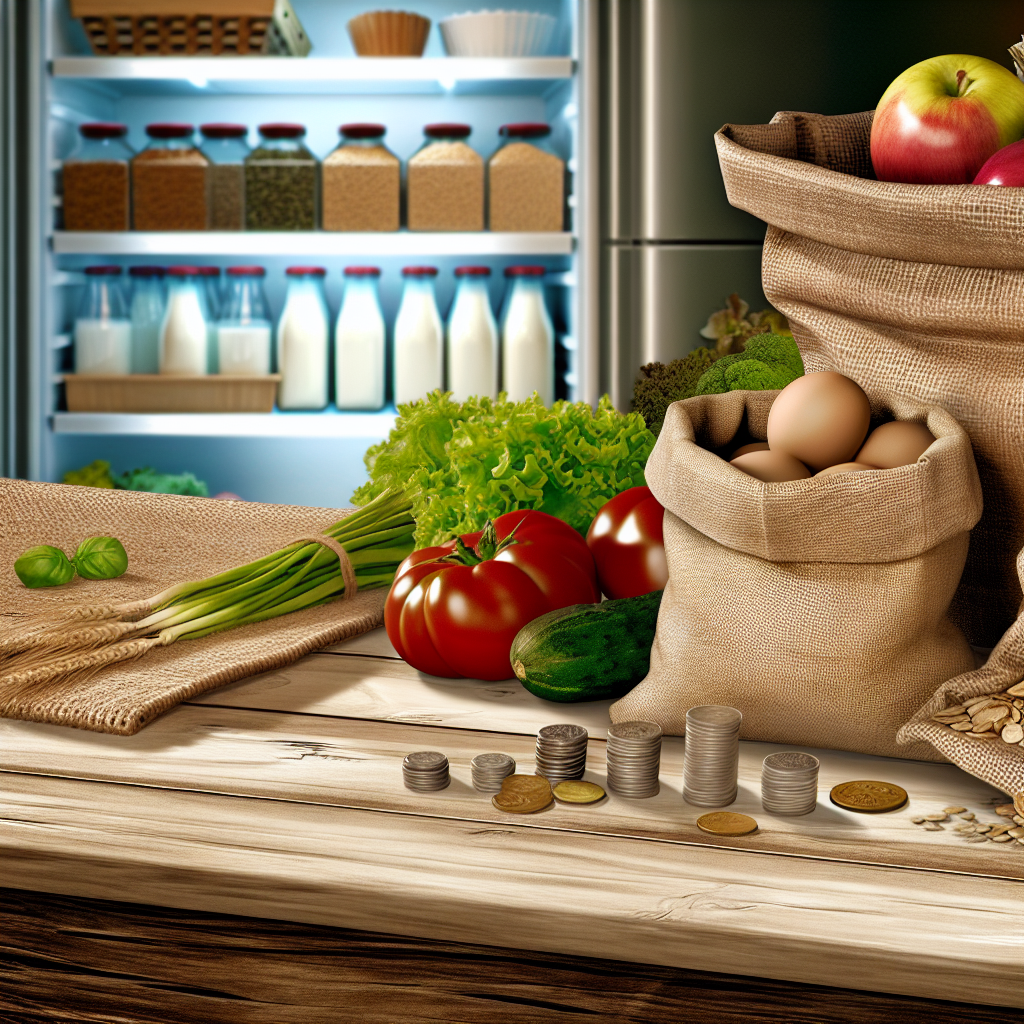10 Creative Ways to Slash Your Grocery Bill While Staying Eco-Friendly
Introduction
Hey there, savvy shoppers! Welcome to Frugal Zeitgeist, where we help you save money and protect the planet every time you go grocery shopping. Nowadays, with changing prices and everyone trying to minimize their impact on the Earth, it’s super important to cut down on grocery costs while being eco-friendly. By being smart with our budget and kind to the Earth, we not only help our wallets but also take care of the planet. It’s a win-win! So, get ready to learn 10 creative ways to lower your grocery bill while keeping the environment in mind. Who knows? You might save enough to treat yourself to something special—just make sure it’s eco-friendly!
1. Plan Your Meals
First, become your family’s iron chef by planning your meals! Think of meal planning as your secret tool against both hunger and waste. Here’s how it helps:
- Reduces Food Waste: Planning meals for the week means you only buy what you need, so less food goes to waste.
- Saves Time and Money: With a meal plan, you avoid last-minute takeout orders that can cost extra money.
- Weekly Menu Tips: Start by checking what you already have. Make a menu using those items and write down what you need to buy. Trust us, your organized self will love you for it, and your wallet will be happy too!
2. Shop with a List
Once you have your meal plan, it’s time for the shopping list—your best friend at the grocery store!
- Avoid Impulse Purchases: A list helps you stay on track and avoid buying things you don’t need.
- Digital List-Making: Use apps like AnyList or Google Keep to easily create, update, and share lists. They’re like little helpers on your phone.
3. Buy in Bulk
Buying in bulk is like a magic trick: you save money and use less packaging at the same time.
- Non-Perishable Items: Grains, beans, and nuts are great to buy in bulk. They last a long time!
- Reducing Packaging Waste: Bulk buying means less packaging waste, which is great for the Earth!
- Storing Tips: Use airtight containers and label them with expiration dates. Your future self will say, “thank you!”
4. Embrace Seasonal and Local Produce
Eat foods that are in-season and grown locally. Your taste buds and budget will thank you.
- Advantages of Seasonal Produce: These foods are often cheaper and taste better because they’re fresh.
- Supporting Eco-Friendly Practices: Local foods travel less distance, which means a smaller carbon footprint.
- Seasonal Foods: Enjoy apples and pumpkins in the fall, leafy greens in the spring, and berries in the summer.
5. Grow Your Own Herbs and Vegetables
Try starting a small garden at home—even if you have limited space!
- Home Garden Benefits: Growing your own food saves money and means fewer trips to the store.
- Environmental Advantages: Less packaging, less transport, and fresher produce.
- Easy Plants for Beginners: Try growing herbs like basil and cilantro or veggies like lettuce and tomatoes. You’ll feel like a gardening wizard in no time.
6. Reduce, Reuse, and Recycle Packaging
Let’s tackle packaging waste, starting with cereal boxes!
- Minimal Packaging: Choose products with less packaging. Fruits and vegetables are delicious just as they are.
- Creative Reuse: Turn jars into lanterns or boxes into organizers—use your imagination!
- Sustainability and Cost Savings: Recycling is a step toward helping the Earth and can save you money too.
7. Cook from Scratch
Say goodbye to processed foods and hello to tasty, homemade meals!
- Cost-Saving Benefits: Cooking at home is often cheaper than buying pre-packaged meals.
- Environmental Impact: Using fresh ingredients means less waste.
- Simple Recipes: Make a pot of soup or some homemade granola. It’s simple, and your taste buds will cheer!
8. Utilize Leftovers Creatively
Get creative with leftovers and give them a second chance!
- Transform Leftovers: Turn last night’s chicken into sandwiches or salads.
- Reducing Food Waste: No more forgotten leftovers in the fridge.
- Leftover Ideas: Use leftovers in stir-fries, soups, or quiches.
9. Shop at Farmers Markets and Co-ops
Visit local farmers markets and co-ops to find fresh, eco-friendly goods.
- Advantages of Local Markets: You get fresh produce, support local farmers, and shop in an eco-friendly way.
- Role of Co-ops: Co-ops offer member discounts and focus on being environmentally friendly.
- Tips for Market Visits: Bring your own bags, ask about growing methods, and try to bargain a little.
10. Take Advantage of Discounts and Coupons
Who doesn’t love a good deal? Especially when it’s eco-friendly!
- Eco-Friendly Coupons: Look for deals on eco-friendly brands or items with recyclable packaging.
- Sustainability Over Savings: While bargains are nice, it’s important to keep eco-friendly choices in mind.
- Resources for Coupons: Websites like Coupons.com or apps like Honey can help you find earth-friendly deals.
Conclusion
There you have it, eco-warrior shoppers! By planning meals, shopping smart, and making thoughtful choices, you can save money and help the environment. Using these tips, you’ll not only save cash but also contribute to a healthier planet. Have any cool eco-friendly tips of your own? Share them in the comments, and let’s make the world a happier, more sustainable place together!
